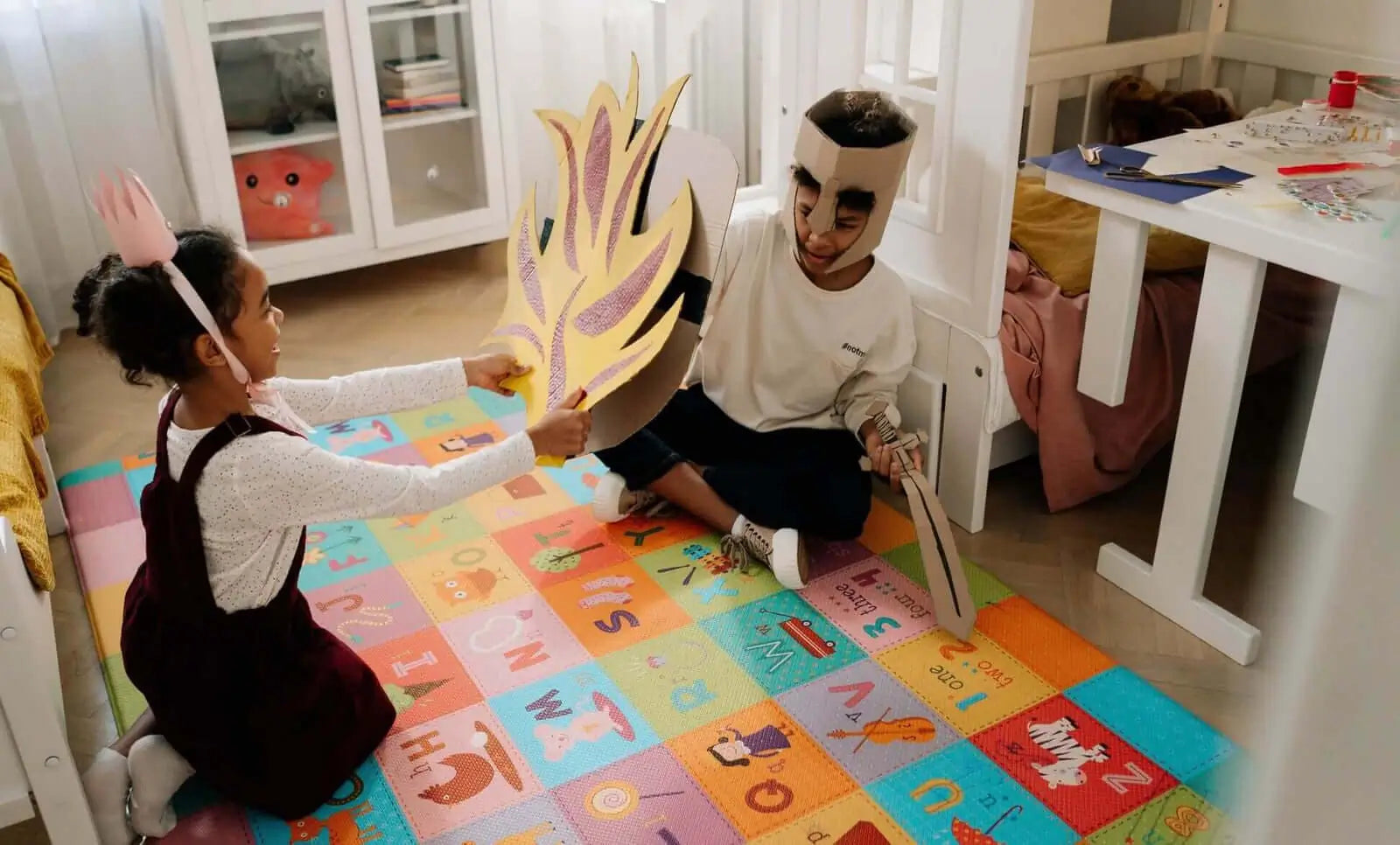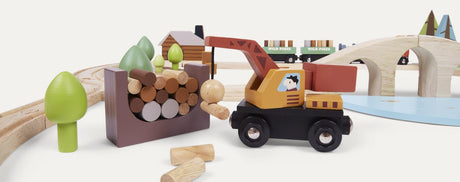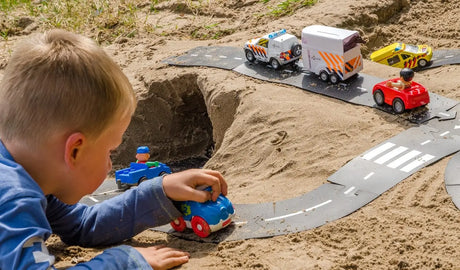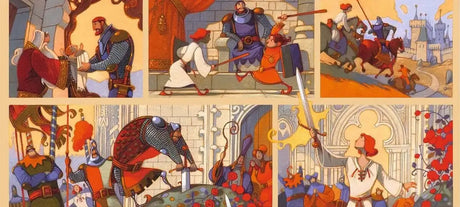Have you ever....participated in a pillow fight? Wrestled with a friend to see who was stronger? Slipped down a staircase on a piece of cardboard? If you answered yes to any of these questions, you have participated in competitive physical play.
Battle games among young children often make parents and caregivers uncomfortable: on the one hand, these games can cause physical injuries and on the other hand, they are perceived as triggers for violent or aggressive behavior can harm the development of young children.
However, research shows that battle games, like any other form of play, are an important source of learning for young children.
Unlike a real fight, these games symbolize a form of nonverbal communication and an essential socialization opportunity during childhood.
What is rough and tumble play?
Battle games are fun activities involving physical contact without the use of objects. These games include wrestling, chasing, and role-playing games involving friendly confrontation. These physical interactions are crucial for a child's social and emotional development.
The emergence of play fighting in childhood
From the age of two, children begin to engage in these games, which remain popular throughout their childhood. It is important to note that the frequency of these games naturally decreases over time from the age of 8.
Differentiate the game from the real fight
When playing battle, children laugh or smile: their only goal is to have fun. It is not, for example, an argument over getting a toy. Additionally, their punches are not as forceful as in a real fight. The strongest even limits his power and sometimes lets the other have the upper hand. Children also take breaks to resume better afterwards. This allows them to reduce tension, reduce the risk of injury and make the pleasure last.
Conversely, real battles are short and intense. The children then show signs of anger. Usually, a cause for the conflict can be found.
Indicators that this is a play fight:
- The children have fun, smile and laugh.
- They don't want to hurt. Their hands are open.
- They sometimes let the other win.
- After the battle game, they want to continue playing together.
Signs of a real fight:
- Children want to hurt themselves. Their eyebrows are furrowed.
- They kick and punch each other.
- They want to win at all costs and they don't want a fightback.
- Afterwards, they no longer want to play together.
Benefits of battle games
Battle games offer multiple developmental benefits:
- Development of motor skills and balance : Children learn to control their strength and evaluate that of others.
- Learning to manage emotions : They learn to control their impulses and manage emotions like anger or fear.
- Strengthening social bonds : These games promote friendship and cooperation.
- Development of self-confidence : Children learn to deal with conflict situations in a healthy way.
These games of controlled aggression contribute, among other things, to:
- develop self-control, over one's impulsivities and over one's muscles (e.g., controlling the force with which one hits or pushes);
- distinguish between acceptable and unacceptable behaviors;
- learn to define and communicate your limits and respect those of others;
- make compromises and respect certain rules;
- reduce the use of physical aggression that hurts.
But don't worry if your child doesn't like pulling. Chasing games (the eternal game of tag ), very popular with children, develop skills similar to those acquired during battle games.
The importance of the role of parents
Parents play a key role in supervising these games. By participating, they transmit values such as respect for rules and self-control. It is also an opportunity to strengthen emotional bonds with their child.
Children who are introduced to rough play young, with their father or a father figure close to them, learn to understand what a real threat is and are less likely to feel attacked at the slightest gesture.
When to intervene?
Some parents view play battles as aggression or the start of an attack. However, according to research, tugging turns into a real fight in less than 1% of cases, except when toddlers have an aggressive temperament. Studies also indicate that battle games do not lead children to violence.
According to the observations of Daniel Paquette, professor at the School of Psychoeducation at the University of Montreal, the risks of a friendly battle between children degenerating into a real battle are tiny.
According to studies, this happens in 0.006% of cases. “There is a bond of attachment that is created between children when things go well. Those who fight most often are the biggest friends,” illustrates Mr. Paquette. Research also indicates that these physical games teach children to regulate their emotions and resolve conflicts peacefully.
Although play fighting is generally harmless, it is important to monitor and intervene if necessary, particularly if one of the children does not appear to be enjoying the game or if the situation becomes dangerous.
When your child and his friends are having fun bickering, observe them carefully. If they seem to be having fun, let them continue . However, pay attention to the following situations:
- When one child always has the upper hand or is not having any fun, separate them;
- If the children are in a dangerous place (e.g. near a staircase), point them out and show them a safe place to continue their play;
- If the situation seems about to escalate, ask them to take a break;
- If they use hard objects, stop them.
When does playful fighting become problematic?
Although play fights are distinct from real fights, they can quickly turn into a full-blown fight. This most often happens when a child accidentally hurts another child.
In a normal relationship, playful fights only turn into real fights part of the time. However, if this happens a lot or children are injured, it may be time to step in and help your children learn to play more safely.
Fights between your children can also be a problem if they cause you stress. It's okay to set limits on how and where they play. For example, your family rules may be as follows:
- The game stops as soon as someone says "Stop!".
- No fighting in certain parts of the house.
- No battles during certain moments or particular contexts (in the car, for example).
- No fights over furniture or the bed;
- No battles when you're on the phone;
- No fights before bedtime
Setting limits is just another way to demonstrate to your children the importance of consent.
Battle games in an educational environment
In educational settings, it is recommended to supervise these games to maximize their benefits. Educators are invited to integrate them into their activities, ensuring the safety and well-being of all children.
Too few educators in childcare services
While fathers become more and more involved with their children, “male figures disappear when a child arrives at daycare,” laments researcher Daniel Paquette. In his brief, he recommends that the Commission on Early Childhood Education ensure that the number of men in childcare services is increased. According to the latest figures from the Ministry of Families, which date from 2013, the network of CPEs and daycare centers has around 32,000 employees, 98% of whom are women.
Conclusion
Battle games are much more than just a fun activity. They are an essential tool for the development of social, emotional, and physical skills in children.
It is essential to distinguish a battle game from a real brawl. In a game, children laugh and have fun, without intending to cause harm. Their movements are measured and often, they let the other have the upper hand to prolong the pleasure of the game.
By understanding and correctly supervising these games, parents and educators can greatly contribute to the development and well-being of children.
References
- CLOUTIER, Patricia. “Plea for battle games in CPE”, Le Soleil, December 29, 2016. lesoleil.com
- Pellis SM, Pellis VC. Play fights during early childhood and their role in the prevention of chronic aggression. Encyclopedia of Early Childhood Development [online]. child-encyclopedia.com . Published: January 2012.
- PAQUETTE, Daniel. “Battle games”, Naître et grandi , April 2021. naitreetgrandir.com
- PAQUETTE, Daniel. “Battles, battle games and war games: should we ban everything? », Défi Jeunesse, vol. 11, no . 2, March 2005, p. 22-28.
- PARTNERS FOR EARLY CHILDHOOD OF THE MRC DES SOURCES. Better support our boys: reference framework. 2017. familyaction.org
- VIGNEAULT, Alexandre. “CPE: the battle is also a game”, La Presse, April 24, 2017. lapresse.ca





